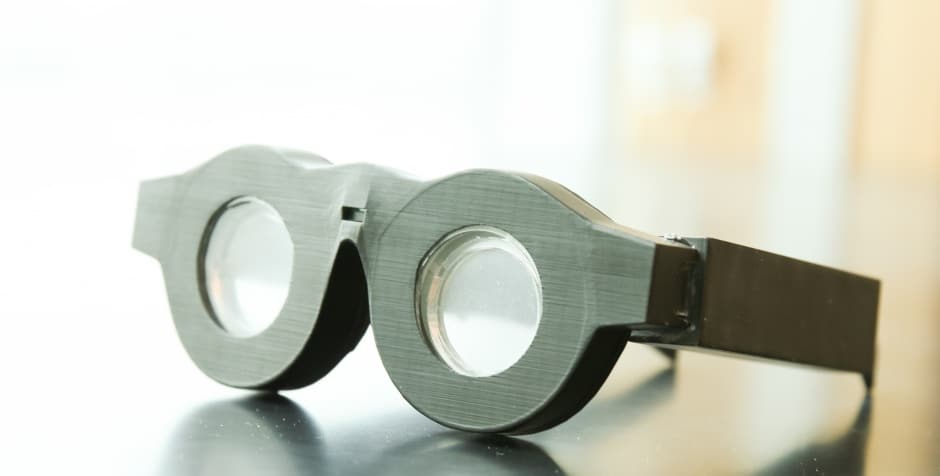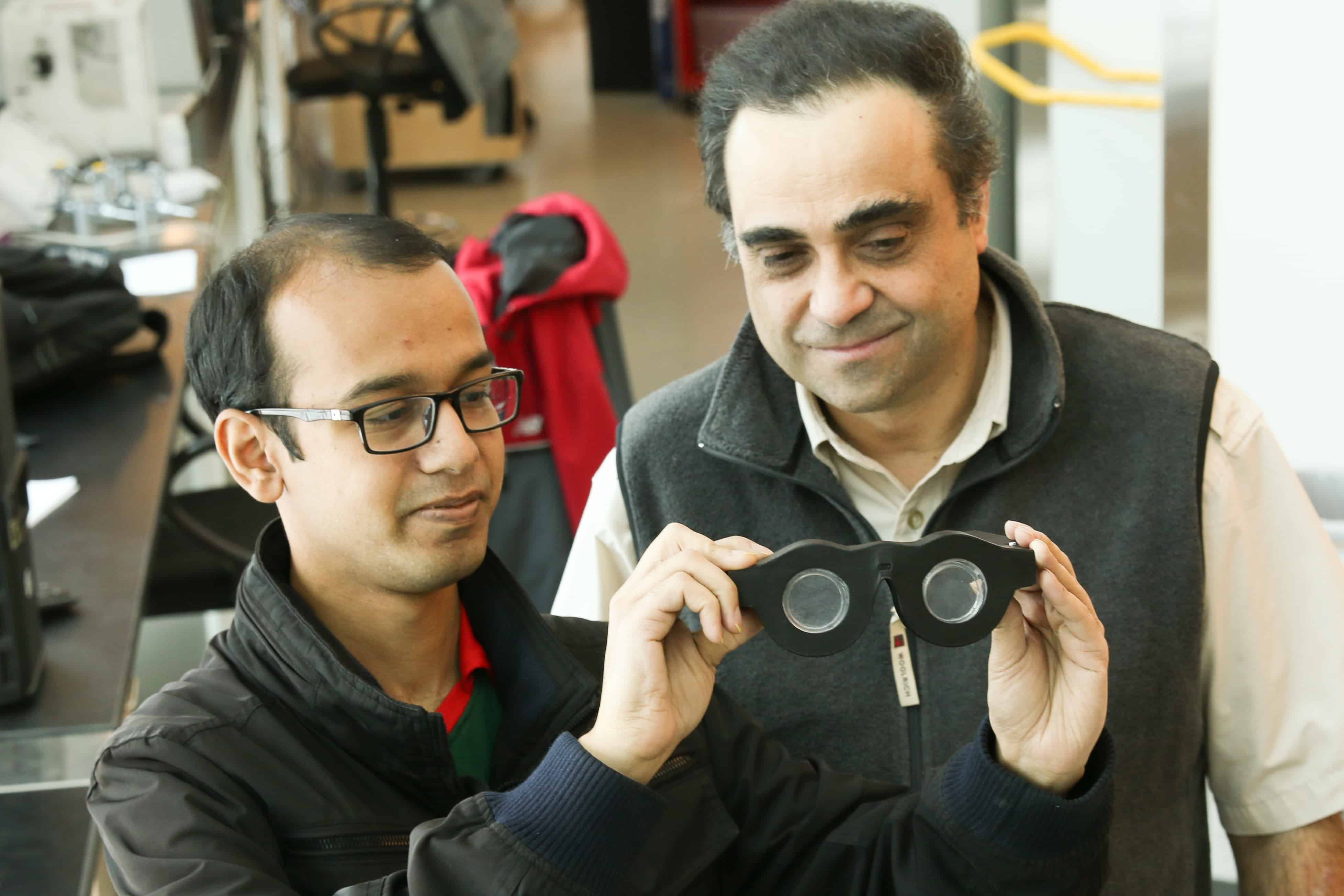
Prototype of the smart glasses. Credit: Dan Hixson/University of Utah
The prototype technology, which was presented at the 2017 CES show in Las Vegas, could spell an end to the need for wearers to swap between different pairs of glasses and enable opticians to make instantaneous changes to a user’s prescription.
The adaptive lenses at the heart of the system consist of flexible rubber-like membranes filled with glycerin. The rear membrane in each lens is connected to a series of three mechanical actuators - powered by a battery in the frame - that push the membrane back and forth like a transparent piston, changing the curvature of the liquid lens and therefore the focal length between the lens and the eye.

Meanwhile, sensors in the bridge of the glasses use pulses of infrared light to measure the distance of objects that the wearer is looking at and instruct the actuators on how to curve the lenses.
Before use, the glasses can be calibrated by the user via a smartphone app. This can then be used to update the glasses with any future changes to user’s prescription.
The team’s efforts are now focused on refining the bulky design of the prototype and developing a market-ready device through spinout company Sharpeyes LLC. Prof Carlos Mastrangelo, who headed up the research, believes a product based on the technology could be available within the next three years.
The group’s research was published in the journal Optics Express.




Project to investigate hybrid approach to titanium manufacturing
What is this a hybrid of? Superplastic forming tends to be performed slowly as otherwise the behaviour is the hot creep that typifies hot...